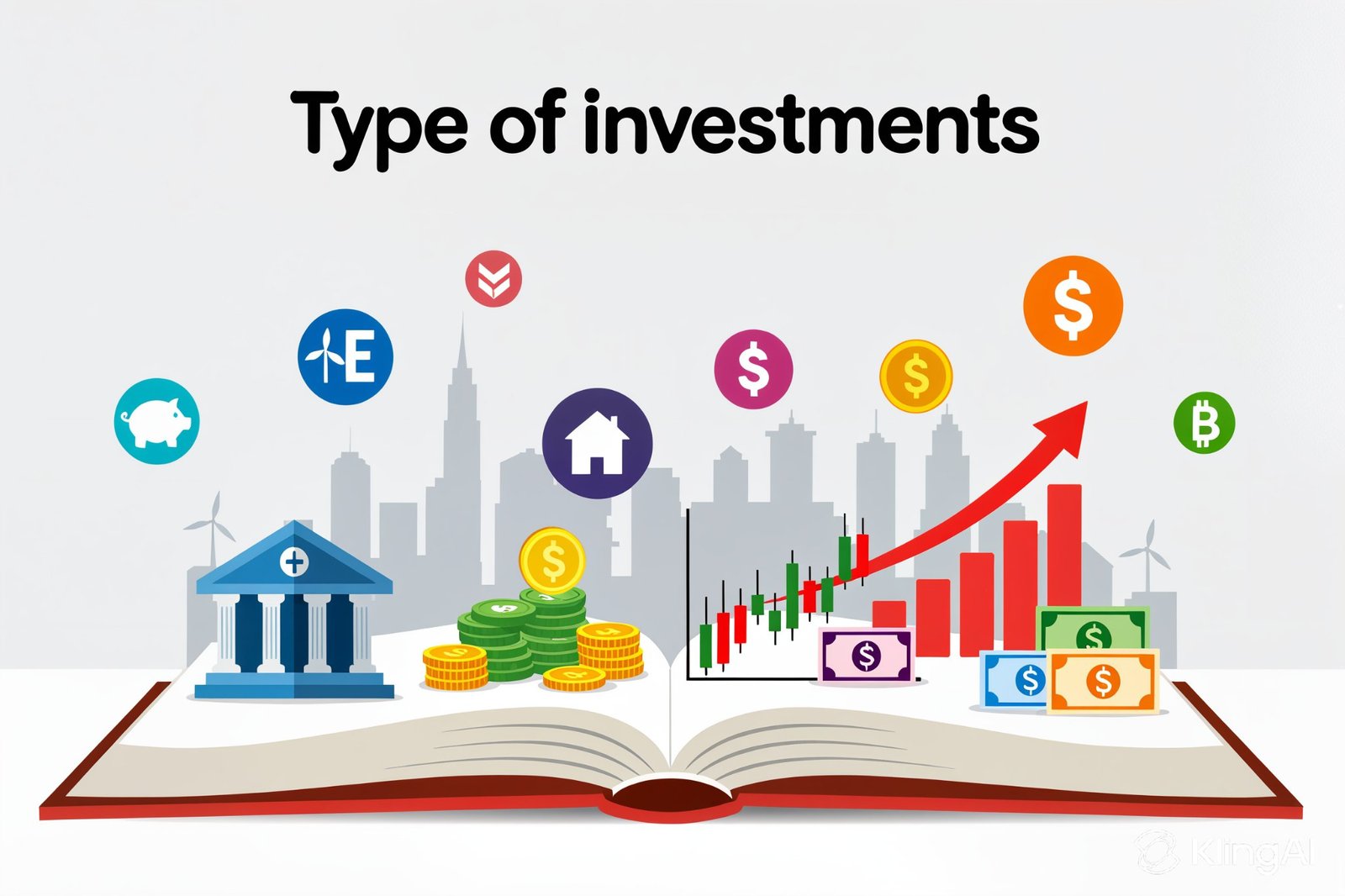Introduction
When it comes to building wealth, investing is one of the most powerful tools available. But for beginners, the world of investments can feel overwhelming. Stocks, bonds, ETFs, mutual funds, real estate, commodities—what do these really mean, and how do they work?
This guide breaks down the most common types of investments in simple terms. By understanding the basics, you’ll be better prepared to create a portfolio that supports your financial goals.
1. Stocks: Owning a Piece of a Company
A stock represents ownership in a company. When you buy shares, you own a small fraction of that business. If the company grows and earns profits, the value of your stock may increase, and you might also receive dividends.
- How you earn: Through price appreciation (selling at a higher price) and dividends.
- Risk level: High—stock prices can rise or fall quickly.
- Who it suits: Investors seeking long-term growth and who can handle ups and downs.
👉 Example: If you bought shares of Apple years ago, your investment would have multiplied as the company expanded globally.
2. Bonds: Safer, Steady Returns
A bond is like lending money to a government or company. In return, they promise to pay you interest at regular intervals and return the original amount (principal) when the bond matures.
- How you earn: Through fixed interest payments.
- Risk level: Lower than stocks, but not risk-free (companies can default).
- Who it suits: Conservative investors or those seeking stable income.
👉 Example: U.S. Treasury bonds are considered very safe because they are backed by the government.
3. Mutual Funds: Team-Based Investing
A mutual fund pools money from many investors to buy a mix of stocks, bonds, or other assets. A professional fund manager decides where to invest.
- How you earn: From growth in the overall value of the fund and sometimes dividends.
- Risk level: Depends on the fund type (stock-focused funds carry more risk, bond funds less).
- Who it suits: Beginners who prefer expert management instead of choosing investments themselves.
👉 Example: A mutual fund focused on technology companies might include shares of Microsoft, Google, and Amazon.
4. ETFs (Exchange-Traded Funds): Flexible and Affordable
Like mutual funds, ETFs hold a basket of investments. The difference is that ETFs trade on stock exchanges, just like individual stocks. This makes them more flexible and often cheaper than mutual funds.
- How you earn: From the fund’s performance and sometimes dividends.
- Risk level: Varies by fund, but usually provides diversification.
- Who it suits: Beginners and experienced investors who want low-cost, diversified options.
👉 Example: An S&P 500 ETF lets you invest in 500 of the largest U.S. companies with just one purchase.
5. Real Estate: Tangible Assets That Grow
Real estate investing means buying property with the goal of earning income (through rent) or selling it later for a profit. You don’t have to buy a house directly; you can also invest through REITs (Real Estate Investment Trusts), which pool money from investors to purchase property.
- How you earn: Through rental income or price appreciation.
- Risk level: Moderate—depends on market conditions and property management.
- Who it suits: Investors who want tangible assets or a hedge against inflation.
👉 Example: A rental property generates monthly cash flow while potentially rising in value over years.
6. Commodities: Physical Goods That Hold Value
Commodities include raw materials like gold, oil, silver, and agricultural products. They are traded on markets and often rise in value when inflation is high or economies face uncertainty.
- How you earn: By selling when prices increase.
- Risk level: High—prices can be very volatile.
- Who it suits: More experienced investors looking to diversify.
👉 Example: Gold is often seen as a “safe haven” during economic downturns.
How to Choose the Right Investment
The best investment for you depends on:
- Your goals – Are you saving for retirement, a home, or short-term needs?
- Your risk tolerance – Can you handle big ups and downs?
- Your timeline – Long-term investors can afford more risk than short-term ones.
A balanced portfolio usually includes a mix of different investments to reduce risk while aiming for steady growth.
Common Mistakes to Avoid
- Investing without research – Understand what you’re buying.
- Chasing trends – Hot stocks or commodities can crash quickly.
- Ignoring diversification – Putting all your money into one investment increases risk.
- Forgetting about fees – High fees can eat away at your returns.
